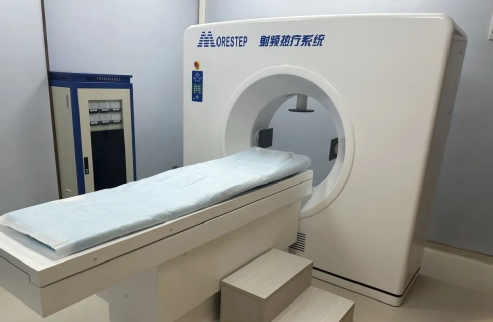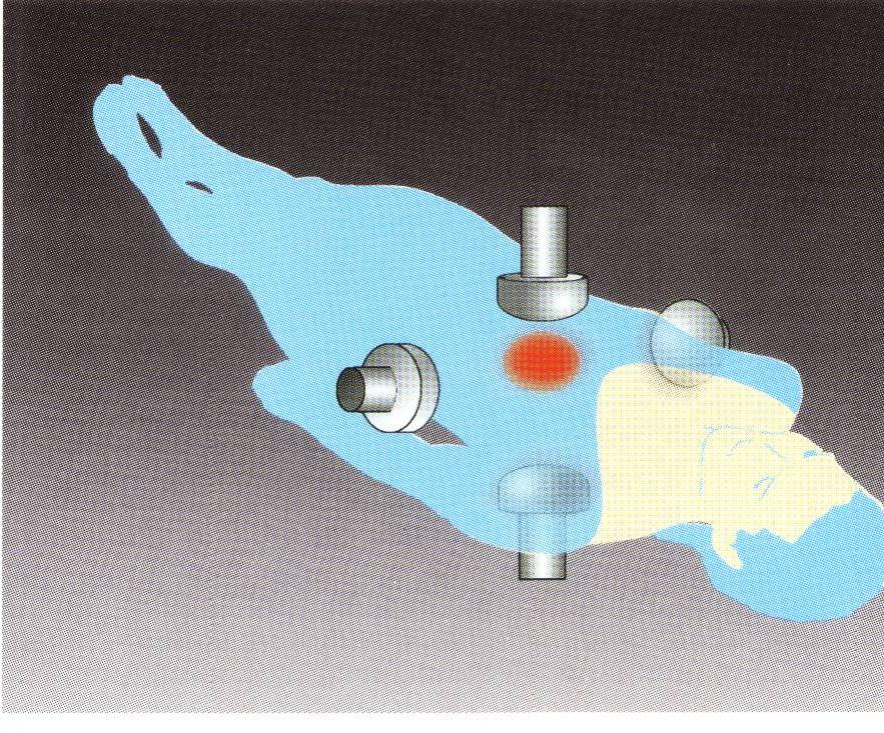Regular patient satisfaction surveys reveal that most patients highly commend our efficient and accurate diagnostic services, noting the demeanor of our staff, which eased their anxiety and boosted confidence in subsequent treatments.
Why Hyperthermia Kills Cancer Cells?
Hyperthermia for tumors primarily exploits the difference in temperature tolerance between normal tissue cells and tumor cells. Tumor cells are more sensitive to high temperatures than normal cells. Hyperthermia for tumors uses physical energy to heat the entire body or a specific area, raising the temperature of the tumor tissue to an effective therapeutic temperature for a sustained period of time. This treatment method achieves the goal of inducing tumor cell apoptosis while preserving the survival of normal cells.

The Role of Hyperthermia
Hyperthermia, when used in conjunction with radiotherapy, chemotherapy, and immunotherapy, can achieve a "1 + 1 > 2" anti-tumor effect and is widely used in the treatment of various malignant tumors.
1. Combination of Hyperthermia and Radiotherapy
Combining tumor hyperthermia with radiotherapy can enhance radiotherapy sensitivity and reduce radiotherapy side effects. Tumor cells located in the central part of a tumor are in a state of hypoxia and are insensitive to radiation. They cannot be completely eliminated after radiotherapy, often becoming the root cause of tumor recurrence. However, hyperthermia is particularly effective against these tumor cells, making it an excellent adjunct to radiotherapy, enhancing the elimination of radiation-resistant cancer cells and thus compensating for radiotherapy's shortcomings.
2. Combination of Hyperthermia and Chemotherapy
Combining tumor hyperthermia with chemotherapy can enhance chemotherapy sensitivity and reduce chemotherapy side effects. Tumor hyperthermia can enhance cell membrane permeability, facilitating the penetration and absorption of anti-tumor drugs. Hyperthermia can accelerate drug uptake and drug response, enhancing anti-tumor efficacy. It can also reduce the toxic effects of chemotherapy drugs on unheated normal tissues. Combining the two can also help prevent and delay the development of drug resistance.

3. Combination of Hyperthermia and Immunotherapy
Hyperthermia can optimize the tumor microenvironment by regulating tumor vascular perfusion, lymphocyte trafficking, inflammatory cytokine expression, tumor metabolism, and temperature-sensitive markers of innate and adaptive immune function, allowing immunotherapy to achieve greater therapeutic effects.
4. Hyperthermia Alone
Hyperthermia alone is suitable for patients at all stages of cancer. For patients with advanced cancer who have relapsed after radiotherapy, chemotherapy, or surgery and are not suitable for further treatment, hyperthermia alone can be used as palliative treatment to alleviate the intractable pain associated with advanced cancer and improve their quality of life.
Advantages of Hyperthermia
Compared to other cancer therapies, hyperthermia causes less damage to normal cells, resulting in relatively fewer side effects and better patient tolerance. It does not cause severe adverse reactions such as hair loss, nausea, and vomiting.
Furthermore, as a physical and non-invasive treatment method, hyperthermia does not involve the use of radiation or chemicals, making it safer and reducing pain and physical damage to cancer patients.
Furthermore, hyperthermia can also, to a certain extent, enhance the body's immune function and strengthen its resistance to tumor cells. Because of this uniqueness, hyperthermia is also known as "green therapy".
Indications for deep hyperthermia
It is applicable to tumors in all parts of the body except intracranial tumors:
(1) Head and neck tumors, large and deep recurrent or refractory cancers or various soft tissue sarcomas;
(2) Chest tumors, such as esophageal cancer, lung cancer, mediastinal tumors, pleural tumors, pericardial tumors, and cancerous pleural effusions;
(3) Abdominal tumors, such as liver cancer, pancreatic cancer, gastric cancer, colon cancer, gallbladder cancer, retroperitoneal tumors, and cancerous ascites;
(4) Pelvic tumors, such as bladder cancer, prostate cancer, rectal cancer, cervical cancer, and ovarian cancer;
(5) Tumors in other parts of the body, such as malignant lymphoma, bone and soft tissue tumors, and malignant melanoma;
(6) Bone metastases.
Regular patient satisfaction surveys reveal that most patients highly commend our efficient and accurate diagnostic services, noting the demeanor of our staff, which eased their anxiety and boosted confidence in subsequent treatments.
Monthly patient satisfaction surveys show that patients highly rate our outpatient services, praising the smooth process, professionalism and patience of our staff, and expressing great satisfaction with the clinic environment.
Inpatient satisfaction surveys reveal patients are very pleased with our services, noting skilled and caring staff, as well as a comfortable environment that provides strong support for their recovery.